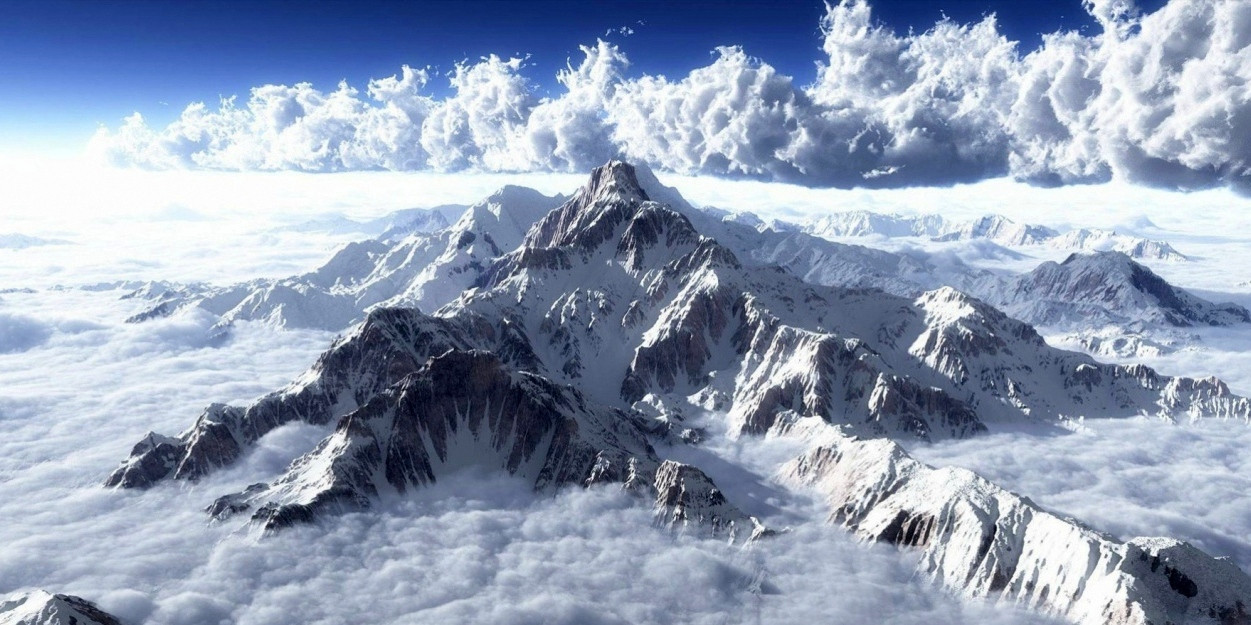Mount Everest (8848 m)
Mount Everest, standing at a staggering height of 8,848.86 meters (29,031.7 feet), is not only the highest peak on Earth but also an iconic symbol of challenge and adventure in the realm of mountaineering. Situated on the border between Nepal and the Tibet Autonomous Region of China, it attracts climbers from around the globe who dream of reaching its summit.
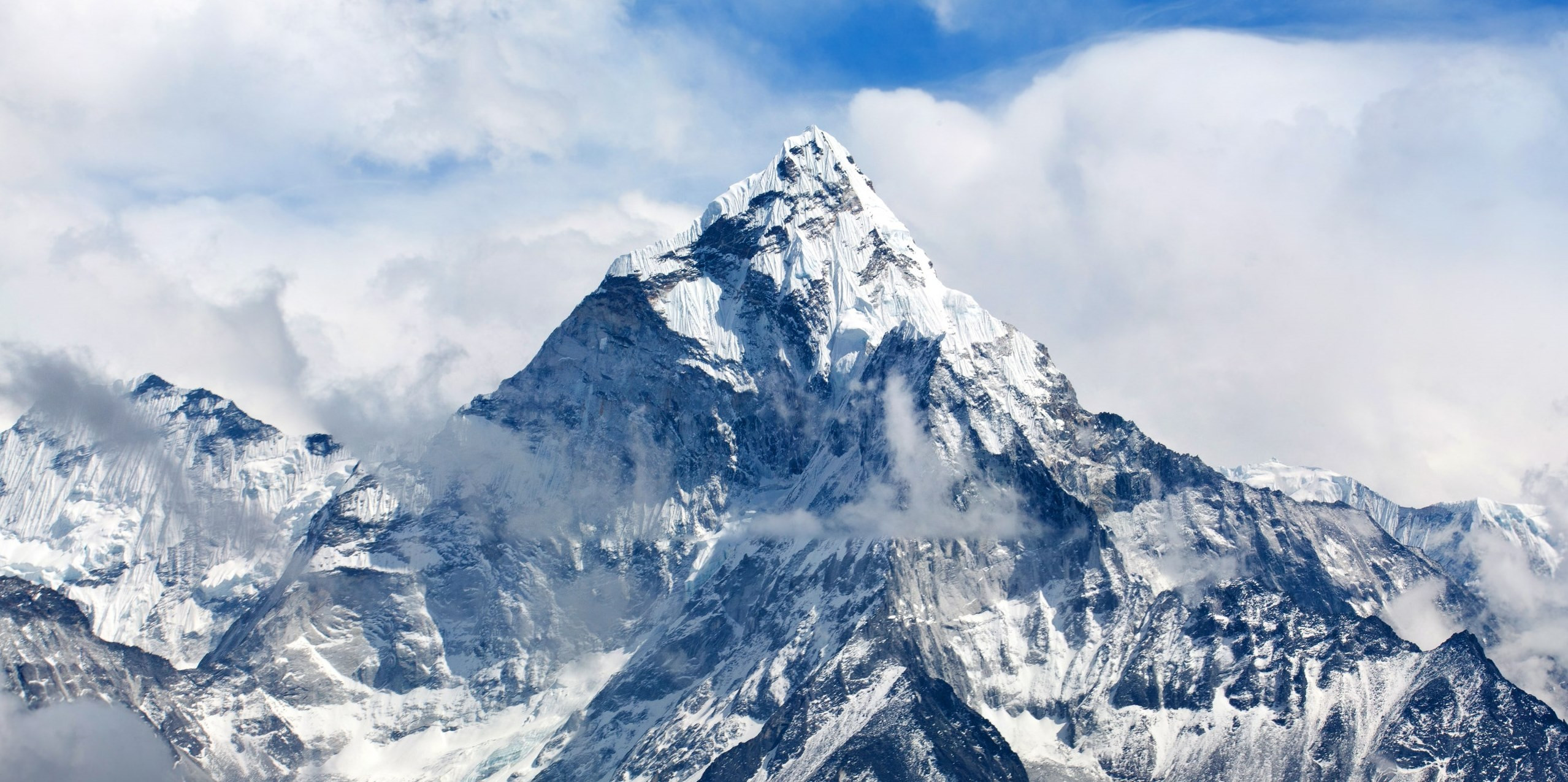
Key Features of Mount Everest
-
Location: The mountain is part of the Mahalangur Himal sub-range of the Himalayas, and the international border between China and Nepal runs across its summit point.
-
Climbing Routes: The two main climbing routes are the Southeast Ridge from Nepal and the North Ridge from Tibet. The Southeast Ridge is generally considered the standard route, involving a climb from the south side, which is technically easier and more frequently used.
-
Base Camps: Everest has two main base camps, one on the south side in Nepal (South Base Camp at 5,364 meters) and another on the north in Tibet (North Base Camp at 5,150 meters). These camps are bustling hubs during the climbing seasons in April- May and September- October.
Climbing Challenges
Climbing Everest poses numerous challenges
-
Extreme Weather: Conditions on Everest are severe, with strong winds and temperatures dropping as low as -60 degrees Celsius (-76 degrees Fahrenheit) at the summit.
-
Altitude Sickness: As climbers ascend beyond 2,500 meters, the risk of altitude sickness increases, which can be life-threatening.
-
Khumbu Icefall: Located between the base camp and Camp 1, this is one of the most dangerous sections of the South route, consisting of large crevasses and unstable seracs.
Historical Significance
-
First Ascent: Sir Edmund Hillary from New Zealand and Tenzing Norgay, a Sherpa of Nepal, were the first confirmed climbers to reach the summit on May 29, 1953. Their ascent marked a monumental moment in mountaineering history.
-
Record Ascents: Over the years, Everest has seen various record-setting ascents, including the first winter ascent, the fastest ascent, and ascents by the youngest and oldest climbers.
Mount Everest continues to be revered as the ultimate test of human endurance and strength, embodying the spirit of exploration and the pursuit of personal extremes. It remains a profound challenge that draws hundreds of climbers attempting the arduous journey to its summit each year.
Kangchenjunga (8,586m)
Kangchenjunga, standing impressively at 8,586 meters (28,169 feet), is the third highest mountain in the world. It is located at the eastern border of Nepal and India, and its name is derived from Tibetan words meaning “The Five Treasures of Snows,” which refers to its five high peaks. This mountain offers some of the most exquisite landscapes in the Himalayas and provides a significant challenge for mountaineers.
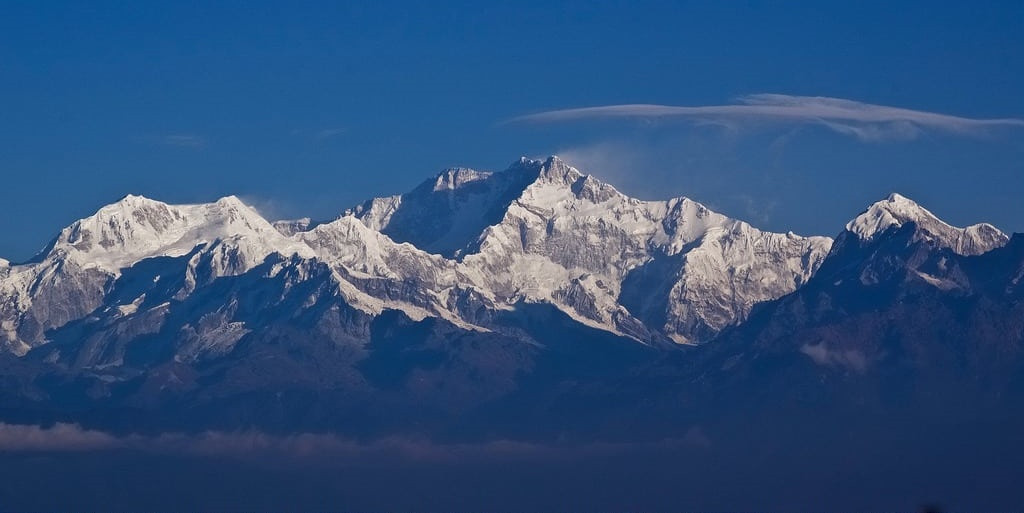
Key Features of Kangchenjunga
-
Location: Kangchenjunga straddles the border between Sikkim, India, and eastern Nepal, providing a diverse range of ecosystems from subtropical forests at lower elevations to glacial plateaus at higher altitudes.
-
Climbing Routes: The mountain has several climbing routes, with the Southwest Face and Northwest Face being among the most challenging. The Northeast Ridge is the standard route, traditionally approached from the Nepalese side.
-
Conservation Efforts: The regions around Kangchenjunga are part of protected areas, including the Kangchenjunga Conservation Area in Nepal and the Kangchenjunga National Park in India, which preserve the unique biodiversity and cultural heritage of the area.
Climbing Challenges
-
Technical Difficulty: Climbing Kangchenjunga is known for its technical difficulty with steep sections of rock, ice, and snow.
-
Remoteness: The mountain’s remote location makes it less accessible than Everest, adding logistical challenges to expeditions and requiring climbers to be more self-sufficient.
-
Extreme Weather: Climbers must be prepared for sudden weather changes, which can include heavy snowfall and strong winds.
Historical Significance
-
First Ascent: Kangchenjunga was first summited on May 25, 1955, by Joe Brown and George Band, part of a British expedition. As a mark of respect for the local Sikkimese beliefs that the summit is sacred, they stopped short of the actual summit, a tradition that has been respected by many climbers since.
-
Cultural Importance: The mountain is considered sacred in Sikkim and is believed to be the abode of deities. Local inhabitants have deep respect and spiritual reverence for Kangchenjunga, which adds a significant cultural layer to expeditions.
Kangchenjunga is less crowded than Everest, offering a more solitary climbing experience. It appeals especially to those who seek not just the physical challenge of climbing high peaks but also a profound connection with nature and respect for local traditions. The mountain continues to be a symbol of adventure, beauty, and mystery, attracting adventurers who are eager to explore its rugged and pristine landscapes.
Lhotse (8,816m)
Lhotse, soaring to a height of 8,816 meters (28,939 feet), holds the distinction of being the fourth highest mountain in the world. It is closely connected to Mount Everest, sharing the same base camp and part of the route, which makes it an equally compelling but slightly less trafficked challenge for mountaineers.
Key Features of Lhotse
-
Location: Lhotse is part of the Everest massif and is connected to the latter by the South Col, a sharp-edged pass that serves as a crucial segment on the route to the Everest summit.
-
Climbing Routes: The most commonly used route on Lhotse is via the Lhotse Face, a large and steep glacier, ascending through the Lhotse Couloir, a challenging and narrow gully.
-
Proximity to Everest: Climbers often consider Lhotse as part of an Everest expedition due to their close proximity, sharing much of the early route, including the ascent through the Khumbu Icefall.
Climbing Challenges
-
Lhotse Face: One of the most dramatic features of the climb, the Lhotse Face is a nearly vertical wall of ice that must be climbed on fixed ropes, presenting a formidable challenge due to its steepness and altitude.
-
Extreme Altitude: As with any high-altitude climb, the risks of altitude sickness, severe weather conditions, and avalanches are significant concerns on Lhotse.
-
Technical Difficulty: The final climb along the Lhotse Couloir is particularly technical, requiring climbers to have advanced skills in ice climbing and navigating through narrow passages.
Historical Significance
-
First Ascent: Lhotse was first summited on May 18, 1956, by the Swiss team of Ernst Reiss and Fritz Luchsinger. Their successful climb marked it as one of the highest mountains ever climbed at the time.
-
Lhotse Middle and Shar: Apart from the main summit, Lhotse also features two subsidiary peaks - Lhotse Middle (East) at 8,414 meters and Lhotse Shar at 8,383 meters. Lhotse Middle was one of the last 8,000-meter peaks to be climbed, with its first ascent only in 2001.
Lhotse remains a coveted goal for climbers who are looking to experience the extreme conditions of high-altitude Himalayan mountaineering without the extreme traffic found on Everest. The mountain's formidable Lhotse Face and the final push through the Couloir offer a test of both physical endurance and mountaineering skills, making it a respected and challenging climb in the climbing community.
Makalu (8,485m)
Makalu, standing at an impressive height of 8,485 meters (27,838 feet), is the fifth highest mountain in the world. Its perfect pyramid shape, marked by sharp edges and steep pitches, makes it one of the most challenging and striking mountains to climb in the Himalayas.
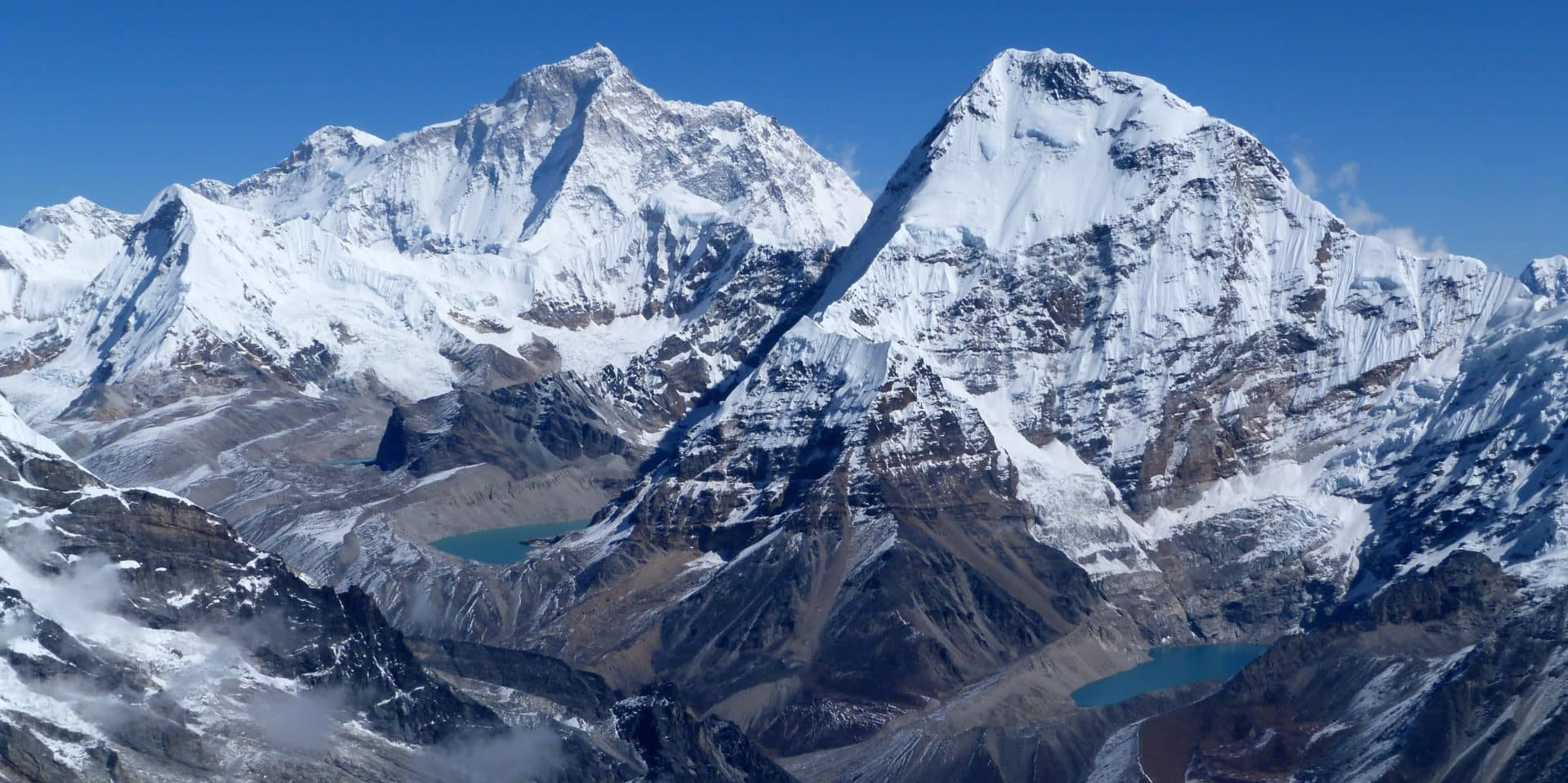
Key Features of Makalu
-
Location: Makalu is located in the Mahalangur Himalayas, 19 kilometers southeast of Mount Everest, on the border between Nepal and Tibet.
-
Climbing Routes: The standard route for ascending Makalu is via the Southeast Ridge, which is known for its technical difficulty involving rock and ice climbing.
-
Makalu-Barun Valley: The mountain sits within the Makalu-Barun National Park, a protected area known for its vibrant and diverse ecosystem. This remote wilderness area offers trekkers a chance to experience relatively untouched natural beauty.
Climbing Challenges
-
Technical Demands: Makalu is renowned for its technical demands; the final ascent involves navigating through a complex series of rock and ice cliffs that require advanced mountaineering skills.
-
Extreme Weather: Climbers must prepare for harsh weather conditions, which can include heavy snowfall, strong winds, and sudden temperature drops.
-
Isolation: Its location adds to the logistical challenges, as it is less accessible and farther away from major trekking bases compared to other high peaks like Everest.
Historical Significance
-
First Ascent: Makalu was first summited on May 15, 1955, by Lionel Terray and Jean Couzy of a French expedition. This successful climb added Makalu to the list of 8000-meter peaks conquered during the golden age of Himalayan mountaineering.
-
Conservation Efforts: The region around Makalu, particularly the Barun Valley, has been recognized for its unique flora and fauna, leading to significant conservation efforts to preserve its pristine condition.
Makalu presents an exceptional challenge even for the most skilled mountaineers due to its severe climbs and the technical nature of its standard route. Its impressive stature, combined with the spectacular natural beauty of the surrounding Makalu-Barun National Park, makes it a favored destination for climbers seeking a less crowded yet equally challenging alternative to the more popular peaks. This mountain not only tests the physical and mental stamina of its climbers but also rewards them with some of the most stunning vistas of the Himalayas.
Cho Oyu (8,188m)
Cho Oyu, known for its towering height of 8,188 meters (26,864 feet), is the sixth highest mountain in the world. Located on the border between Nepal and Tibet, Cho Oyu is favored by many climbers for being one of the most accessible and manageable of the eight-thousanders, offering a relatively safer and less technically demanding route to the summit.
Key Features of Cho Oyu
-
Location: Positioned just 20 kilometers west of Mount Everest, Cho Oyu lies in the heart of the Himalayas on the border between the Khumbu region of Nepal and Tibet.
-
Climbing Routes: The most popular route is the Northwest Ridge, which features a straightforward ascent with minimal technical obstacles, making it an excellent choice for climbers looking to tackle their first 8,000-meter peak.
-
Base Camp: The base camp is easily accessible by vehicle from Tibet, adding to the mountain's appeal by reducing the time and effort needed for the approach.
Climbing Challenges
-
Altitude: Despite its reputation as one of the easier eight-thousanders, the extreme altitude of Cho Oyu still presents significant challenges, including the risk of altitude sickness and severe weather conditions.
-
Weather Conditions: Climbers must be prepared for sudden weather changes, which can rapidly escalate from clear skies to severe storms.
-
Avalanche Risk: Certain sections of the climb, particularly around the Nangpa La pass, are prone to avalanches, requiring careful planning and timing.
Historical Significance
-
First Ascent: Cho Oyu was first successfully summited on October 19, 1954, by Herbert Tichy, Joseph Jöchler, and Pasang Dawa Lama of an Austrian expedition. This ascent was notable for its small team size and minimal external support, setting a new standard for Himalayan mountaineering.
-
Cultural Significance: The name Cho Oyu means "Turquoise Goddess" in Tibetan, reflecting the peak’s reverence in local culture and its prominent appearance in the landscape.
Cho Oyu serves as an ideal starting point for climbers aspiring to scale higher and more demanding peaks. Its relatively straightforward routes and the beauty of its surroundings make it a popular choice for both novice and experienced mountaineers. The peak provides an excellent introduction to high-altitude expeditions, offering climbers a taste of the challenges and rewards of climbing in the Greater Himalayas.
Dhaulagiri (8,167m)
Dhaulagiri, with its towering height of 8,167 meters (26,795 feet), ranks as the seventh highest mountain in the world. Its name, derived from Sanskrit, means "White Mountain," aptly reflecting its stunning ice and snow-covered facade. Situated in north-central Nepal, Dhaulagiri offers some of the most challenging and dramatic trekking and climbing routes in the Himalayas.

Key Features of Dhaulagiri
-
Location: Dhaulagiri is isolated from Nepal's other high peaks by deep valleys and high passes, located to the northwest of Pokhara, a major tourist hub.
-
Climbing Routes: The standard route for ascending Dhaulagiri is the Northeast Ridge, but the mountain features several other routes, each with its unique challenges and characteristics.
-
Terrain: The mountain's terrain includes massive icefalls and glaciers, steep snow slopes, and technical rock faces, making it a complex climb.
Climbing Challenges
-
Technical Difficulty: Dhaulagiri's climbing routes are known for their technical difficulty involving mixed climbing (rock, ice, and snow), requiring climbers to have high proficiency in various mountaineering techniques.
-
Extreme Weather: The mountain's high altitude brings extreme weather conditions, including intense snowfall and strong winds, which can change rapidly and unpredictably.
-
Remote Location: The mountain's remote location enhances its allure but also adds logistical challenges, as accessing base camp often involves a long trek through rugged terrain.
Historical Significance
-
First Ascent: Dhaulagiri was first summited on May 13, 1960, by a Swiss/Austrian/Nepali expedition. This ascent was significant as it opened up one of the most challenging eight-thousanders to future expeditions.
-
Exploration History: Before the successful ascent in 1960, Dhaulagiri was considered one of the last great challenges of the Himalayas, with several unsuccessful attempts in the 1950s underscoring its difficulty.
Dhaulagiri remains a coveted goal for experienced climbers due to its reputation as a difficult and dangerous mountain. The climb offers not only physical and technical challenges but also the opportunity to experience some of the most awe-inspiring and pristine environments in the high Himalayas. This mountain appeals particularly to those who seek a more solitary climbing experience, away from the more crowded routes of other high peaks.
Manaslu (8,163m)
Manaslu, standing at an impressive height of 8,163 meters (26,781 feet), is the eighth highest mountain in the world. Known as the "Mountain of the Spirit," Manaslu is located in the Mansiri Himal, part of the Nepalese Himalayas in the west-central part of Nepal. This peak is noted for its towering sharpness and the beautiful, rugged landscapes that surround it, offering one of the more remote and culturally enriching climbing experiences in Nepal.

Key Features of Manaslu
-
Location: Manaslu is relatively isolated compared to other peaks of the Himalayas, contributing to its allure and the pristine nature of its surroundings.
-
Climbing Routes: The most commonly used route for ascending Manaslu is the Northeast face, which offers a mix of steep snow climbing and moderate technical difficulty.
-
Cultural Significance: The region around Manaslu is rich in Tibetan culture, with many ancient practices and traditions still alive in local villages, enhancing the trekking experience with a cultural immersion.
Climbing Challenges
-
Avalanche Risk: The climbing route on Manaslu is known for its susceptibility to avalanches, particularly in the area above Camp I, which requires careful planning and weather consideration.
-
Technical Sections: While not as technically demanding as some other eight-thousanders, Manaslu still has sections that require good skills in ice and snow climbing, especially around the notorious 'icefall' section.
-
Remote and Rugged Terrain: The approach to Manaslu and the base camp involves a trek through remote areas, requiring climbers to be well-prepared for self-sufficiency and potential isolation.
Historical Significance
-
First Ascent: Manaslu was first summited on May 9, 1956, by Toshio Imanishi and Gyalzen Norbu, part of a Japanese expedition. The successful climb marked an important achievement in the history of Japanese mountaineering.
-
Conservation Efforts: The area around Manaslu is part of a conservation area, which aims to preserve the natural environment and promote sustainable tourism practices in the region.
Manaslu's relatively remote location and less crowded routes make it an attractive alternative for those looking to avoid the more commercialized trekking and climbing experiences found on mountains like Everest. The Manaslu Circuit Trek, encircling the mountain, is celebrated not only for its breathtaking scenery but also for its deep cultural insights, making it a profoundly satisfying experience for those who undertake it.
Annapurna (8091m)
Annapurna, standing at 8,091 meters (26,545 feet), is the tenth highest mountain in the world and one of the most formidable peaks in the Himalayas. Unlike many other high mountains, Annapurna is known for its extreme danger and high fatality rate among climbers, which contrasts sharply with its breathtaking beauty and the rich cultural landscape that surrounds it.
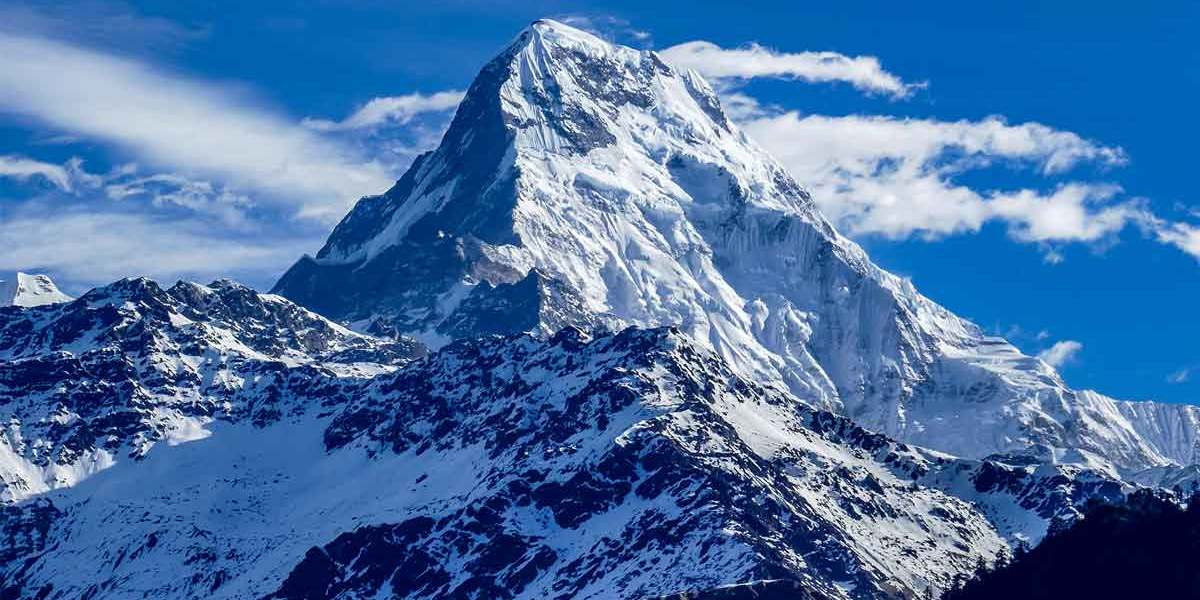
Key Features of Annapurna
-
Location: Annapurna is located in north-central Nepal and is part of the Annapurna massif that includes several other significant peaks. It dominates the skyline in the vicinity of Pokhara, a major tourist hub.
-
Climbing Routes: The standard climbing route for Annapurna I is the North Face, which is extremely challenging due to its steep, icy, and avalanche-prone slopes.
-
Trekking Routes: Besides the climbing expeditions, the Annapurna region is famous for its trekking routes, including the Annapurna Circuit and the Annapurna Base Camp Trek, which offer some of the most scenic hiking in Nepal.
Climbing Challenges
-
High Fatality Rate: Annapurna I has one of the highest fatality rates of any of the 8,000-meter peaks due to frequent avalanches and its technically demanding routes.
-
Avalanche Danger: The mountain's geography contributes to unstable snow conditions that significantly increase the risk of avalanches, particularly in certain areas like the approach through the Annapurna Sanctuary.
-
Technical Difficulty: Climbing Annapurna requires excellent technical climbing skills, experience in high-altitude mountaineering, and a strong psychological fortitude to face its numerous challenges.
Historical Significance
-
First Ascent: Annapurna was the first of the 8000-meter peaks to be climbed, with the first ascent made by Maurice Herzog and Louis Lachenal of France in 1950. This historic climb was also the first successful ascent of an 8000-meter peak, and Herzog's account of their expedition, "Annapurna," remains a classic in mountaineering literature.
-
Cultural Impact: The mountain is considered sacred by the local population, adding a spiritual dimension to its physical challenge.
Despite its dangers, Annapurna continues to attract climbers and trekkers from around the world, drawn by its reputation and the stunning natural beauty of the region. The mountain's allure is enhanced by the rich biodiversity of the Annapurna Conservation Area and the vibrant cultures of the Gurung and Thakali communities, making it not just a climbing destination but a profound journey into the heart of Nepal's natural and cultural splendor.
As references of the ultimate human experience, the eight top Nepal mountains—Mount Everest, Kangchenjunga, Lhotse, Makalu, Cho Oyu, Dhaulagiri, Manaslu, and Annapurna—are magnificent natural beauties. Every summit brings particular difficulties and provides transformative experiences that transcend physical victories, therefore encouraging deep personal development and a greater respect of our planet's fragile beauty and cultural variety. These mountains attract mountaineers and adventurers from all around the world, thereby supporting local economies and raising awareness of environmental preservation. These enormous Himalayan peaks incarnate the will to discover and motivate a relentless quest of elevation above the clouds, into the very heart of the sky.
FAQs for 8 World's highest Mountains in Nepal
Q: Which is the easiest of the eight highest mountains in Nepal to climb?
A: Cho Oyu is considered the easiest of these eight mountains due to its more straightforward routes and relatively lower technical difficulty.
Q: What are the main dangers faced when climbing these high mountains?
A: The main dangers include extreme altitude sickness, severe weather conditions, avalanches, and the technical challenges of navigating steep, icy, and rocky terrains.
Q: How long does it typically take to climb Mount Everest?
A: A typical Mount Everest expedition takes about two months, including acclimatization and weather delays.
Q: Are special permits required for climbing these mountains?
A: Yes, climbers need to obtain special climbing permits from the Nepal Mountaineering Association or the Department of Tourism. Additionally, national park or conservation area permits are required, depending on the mountain's location.
Q: What is the best time of year to climb these mountains?
A: The best times to climb these mountains are during the pre-monsoon season (late April to early June) and post-monsoon season (late September to October) when the weather is most stable.
Q: How much does it cost to climb these mountains?
A: The cost varies widely depending on the mountain, the route, the length of the expedition, and the services included. Costs can range from a few thousand dollars for less technical mountains like Cho Oyu to tens of thousands for Everest.
Q: What level of experience is required to climb these mountains?
A: Climbing high-altitude mountains requires a high level of physical fitness, experience in high-altitude mountaineering, and technical climbing skills, especially for mountains like Everest, Kangchenjunga, and Annapurna.
Q: Can these mountains be climbed without a guide?
A: It is highly recommended to climb with an experienced guide or as part of an organized expedition, especially for those unfamiliar with high-altitude climbing and the specific challenges of the Himalayas.
Q: What conservation efforts are in place to protect the environments around these mountains?
A: Conservation efforts include regulations on the number of climbing permits issued, strict waste disposal policies on the mountains, and various initiatives led by the Nepalese government and international organizations to preserve local ecosystems and support sustainable tourism practices.
For the Nepal Tour, please click here.
If you are looking for different kinds of Nepal Packages, feel free to contact us.
